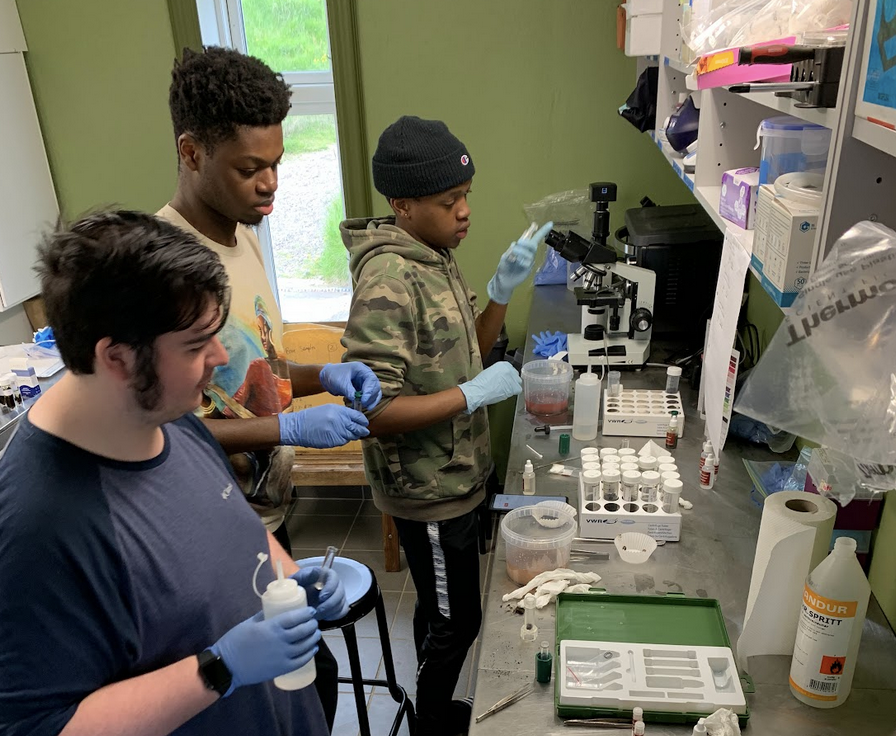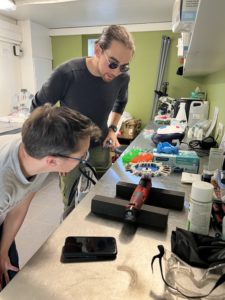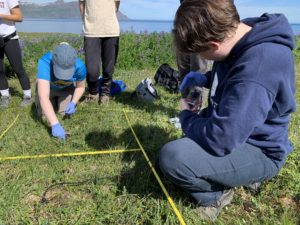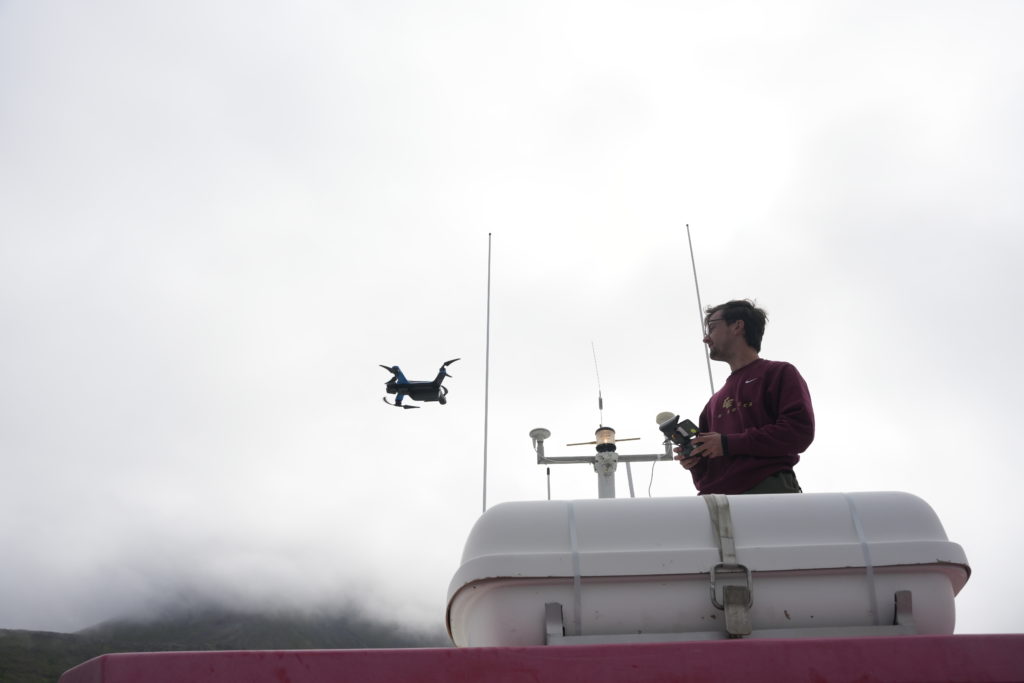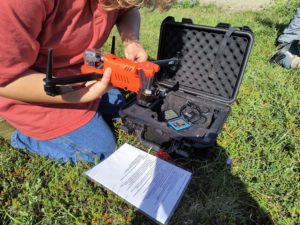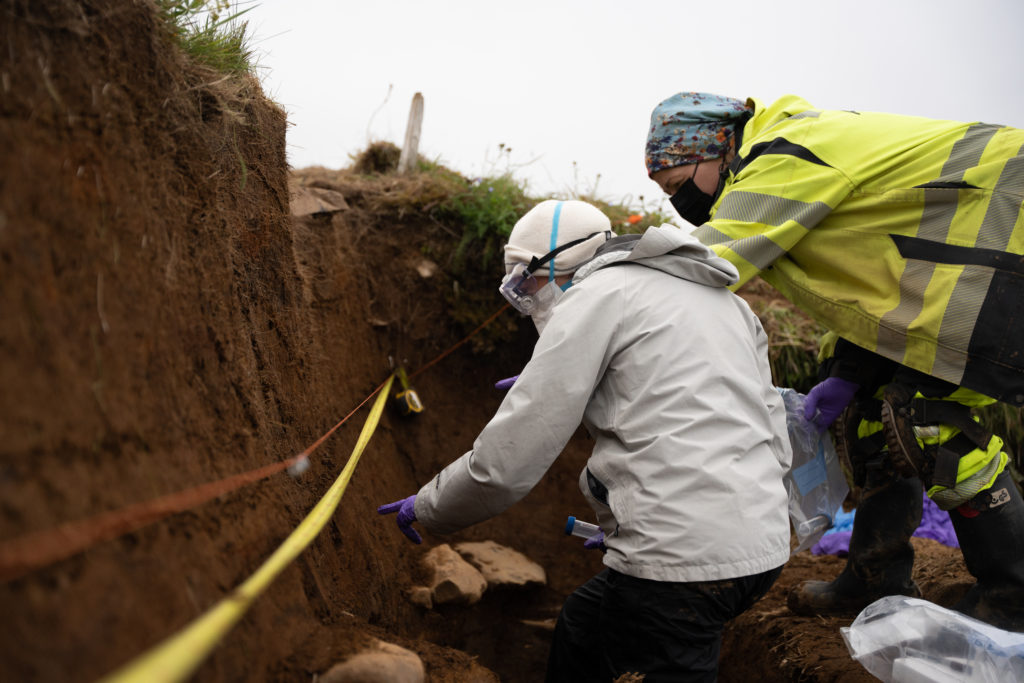Our Current Projects
Environmental DNA
Environmental DNA, or eDNA, is an emerging field in environmental sciences. It is being used to monitor species presence/absence, species abundance, and species changes by collecting samples of soil, water, and even air. Multiple samples must be collected in a sterile manner. The DNA is then extracted from the samples and sequenced. Most studies look at a particular genetic region of the ribosomal RNA, the 16S for microbes or the 18S for eukaryotes. Then, bioinformatic analysis helps determine which species are present in the sample.
eDNA analysis can tell us a lot about how the microbes and plants in Iceland are responding to climate change. It can also tell us how creatures that live in the fjord are responding to anthropomorphic use (a massive fishing fleet, increase in cruise ship traffic, possible salmon fish farm).
Our ongoing eDNA projects in Iceland include:
- soils taken in a chronosequence at the forefield of the Sólheimajökull glacier
- soils taken from a variety of microclimates and microhabitats at Skálanes (in collaboration with colleagues from John Moores University in Liverpool and Dr. Óli Pétursson of Skálanes)
- Water samples from the Seyðisfjörðiur fjord (in collaboration with Dr. Emma Cross at Southern Connecticut State University and Dr. Óli Pétursson of Skálanes)
Quadcopter Surveying
Quadcopter surveying is a technique that allows us to measure a number of slow and rapid changes to the Icelandic landscape. We fly a grid-like pattern over an area, collecting images at a constant elevation. Software is then used to merge all the images together into a large composite image, and to create a 3d model of the area from the terrain details present in the images. We also collect high-accuracy GPS points, called GCPs (Ground Control Points), which the software can use to create very accurate representations of a large physical area. By flying the same surveys each year, we can measure the differences in such an area as it changes over time.
Some of the ways we use this technology:
- Measure volume loss of the Sólheimajökull glacier
- Monitor Arctic Lupine (an invasive species) spread (in collaboration with Dr. Óli Pétursson of Skálanes)
- Identify and monitor bird nesting habitats in collaboration with Dr. Óli Pétursson of Skálanes)
- Make coastal erosion measurements (in collaboration with Dr. Óli Pétursson of Skálanes)
- Locate archaeological sites (in collaboration with archaeologist Rannveig Þorhallsðöttir)
Ancient DNA and Archaeology
Ancient DNA (aDNA) is a new technology that is being applied to many types of archaeology sites. In Iceland, we work in collaboration with local archaeologist Rannveig Þorhallsðöttir to analyze aDNA from soil samples collected in various archaeological sites in East Iceland. Soil samples are transported to Earlham and aDNA is extracted in an extremely sterile environment inside the Ancient DNA Lab on campus. aDNA is sent for sequencing and analyzed with bioinformatic software suites to determine what DNA fragments are present in the samples.
Our current aDNA projects include:
- Ancient DNA analysis from soils extracted at known archaeological sites at Skálanes and in the town of Seyðisfjörður (Article)
